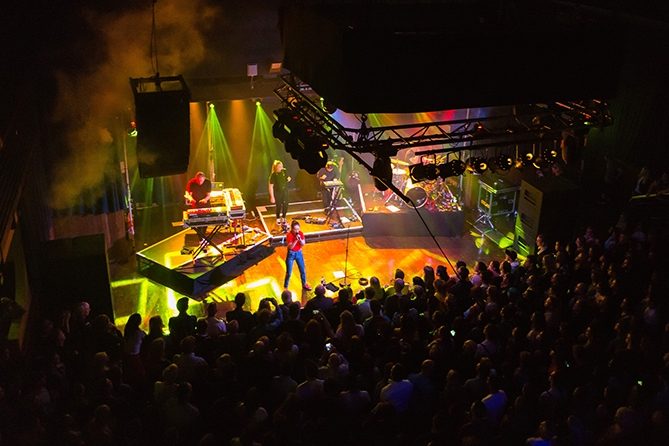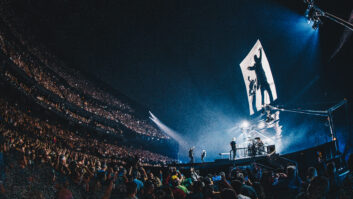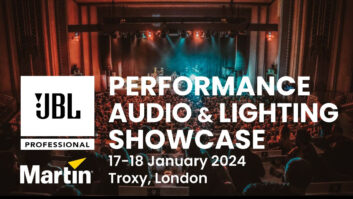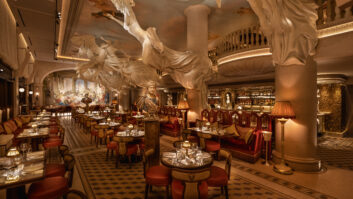
Simon Purse, product support engineer at Martin Audio, discusses walking the line between sonic and structural considerations with speaker systems in concert venues, as well as the growing presence of computer modelling over mechanical optimisation.
What are the biggest challenges to the successful deployment of loudspeaker systems in concert venues?
Designing a system capable of faithfully reproducing audio and ensuring that reproduction disperses evenly across the audience area can be very problematic.
Loudspeaker placement can often be a compromise between the sonically ideal location and the limitations of the building. With thoughtful placement and modern digital signal processing it is possible to get closer to a phase coherent wave front that passes across the audience area evenly. The positions of the loudspeakers in relation to both each other and the audience must be considered to avoid unwanted variations in SPL and frequency response caused by comb filtering and differing arrival times.
Once this audio is in space, room acoustics take over and the next challenge is propagating this energy evenly. High reverberation times can cause a single impulse to be audible for several seconds. This is detrimental to intelligibility, which makes speech hard to understand and can cause rhythm to be blurred. Acoustic treatment can reduce these effects but increasingly computer modelling and optimisation are used to mathematically avoid challenging areas within a space.
How do reverberation times for different uses create difficulties for the design and implementation of concert venue sound systems?
Reverberation is a necessary part of our daily auditory experience. Without it audio can become dislocated from its environment. For example a highly reverberant vocal in a large cave is to be expected, but this, of course, is less true for your front room.
This idea must be taken into account in system design as a venue with a large reverb time or RT60 can have a dramatic effect on the intelligibility and sound quality of any system. Line array systems are commonly used in modern venues as these systems can help combat unwanted reflections by actively avoiding the surfaces that create them. Line arrays propagate acoustic energy in the vertical axis, this is of course frequency dependant but it does offer vertical beam control. This allows a system designer the ability to both mechanically and more recently mathematically optimise arrays to avoid the problem areas and surfaces that are responsible for the worst reflections. The ability of a system to achieve this can be the difference of success or failure.
At Martin Audio our Mutli-cellular Loudspeaker Array (MLA) systems are a perfect example of how we can use both mechanical and computer optimisation to control SPL and frequency response in defined areas within a space.
How big of a factor is timescale for concert venue installs? And how do you manage it effectively?
As a product engineer for Martin Audio, I work within a team of system designers liaising with contractors, acoustic consultants and of course advising our distributers and in turn their clients.
Timescale is an important factor for all of our installation work but we tend to spend as much time as is required to produce a high quality outcome. We manage all our projects on an individual basis simply giving validation or producing compete system designs depending on the requirements of our clients. In this way we can remain flexible to give priority to projects with smaller more urgent timescales.
With many traditional venues looking to upgrade sound systems, are audio manufacturers currently getting a high proportion of concert venue projects?
Overall, concert venue projects are not as frequent as say houses of worship, bars and restaurants, but that is down to the number of concert venues there are by comparison.
That said a recent project stands out. Scala in London (pictured) recently made a significant upgrade to their system with MLA Compact as they felt a leading London venue needed a recognised sound system but also one that could contain the reflections of the glass wall facing the stage.
Specifically, with concert venue projects it has generally been our MLA series that has featured but we are now doing lots of project designs involving our new Wavefront Precision series.







